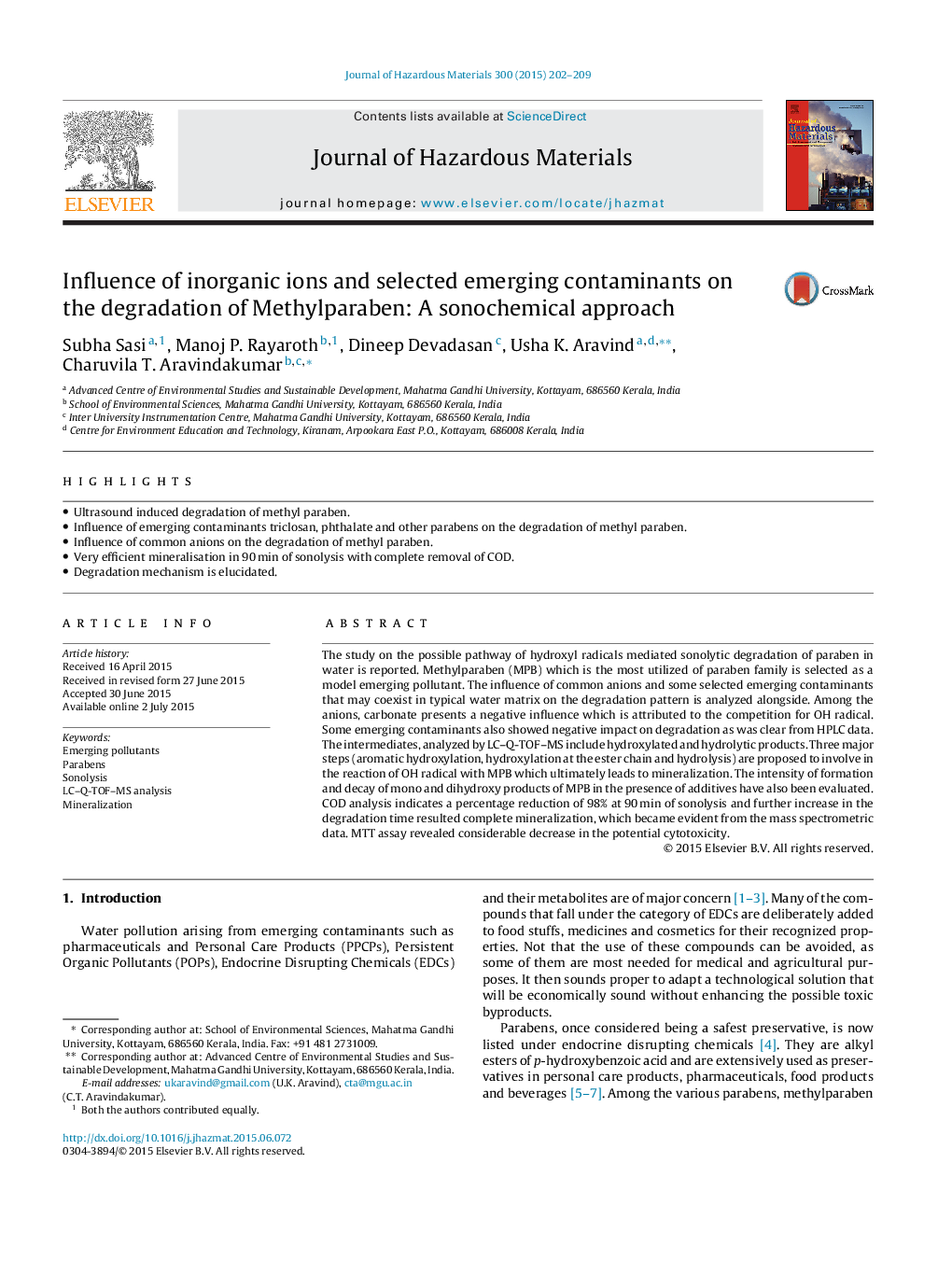| Article ID | Journal | Published Year | Pages | File Type |
|---|---|---|---|---|
| 575691 | Journal of Hazardous Materials | 2015 | 8 Pages |
Abstract
The study on the possible pathway of hydroxyl radicals mediated sonolytic degradation of paraben in water is reported. Methylparaben (MPB) which is the most utilized of paraben family is selected as a model emerging pollutant. The influence of common anions and some selected emerging contaminants that may coexist in typical water matrix on the degradation pattern is analyzed alongside. Among the anions, carbonate presents a negative influence which is attributed to the competition for OH radical. Some emerging contaminants also showed negative impact on degradation as was clear from HPLC data. The intermediates, analyzed by LC-Q-TOF-MS include hydroxylated and hydrolytic products. Three major steps (aromatic hydroxylation, hydroxylation at the ester chain and hydrolysis) are proposed to involve in the reaction of OH radical with MPB which ultimately leads to mineralization. The intensity of formation and decay of mono and dihydroxy products of MPB in the presence of additives have also been evaluated. COD analysis indicates a percentage reduction of 98% at 90Â min of sonolysis and further increase in the degradation time resulted complete mineralization, which became evident from the mass spectrometric data. MTT assay revealed considerable decrease in the potential cytotoxicity.
Related Topics
Physical Sciences and Engineering
Chemical Engineering
Chemical Health and Safety
Authors
Subha Sasi, Manoj P. Rayaroth, Dineep Devadasan, Usha K. Aravind, Charuvila T. Aravindakumar,
